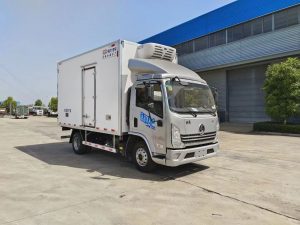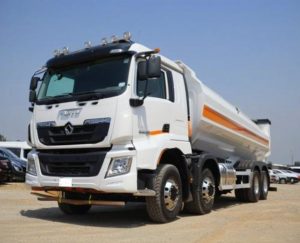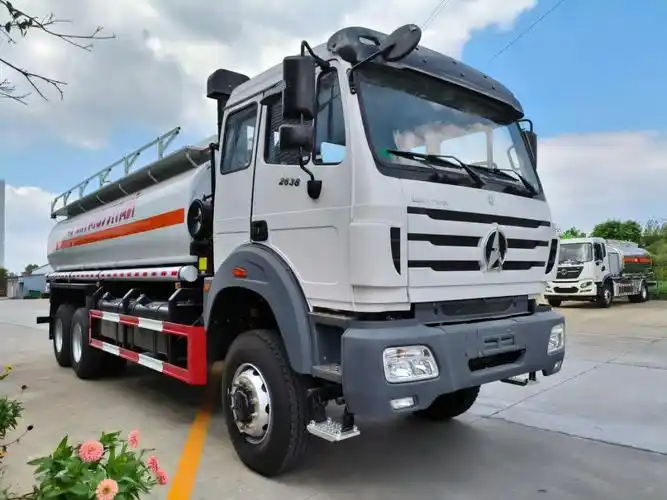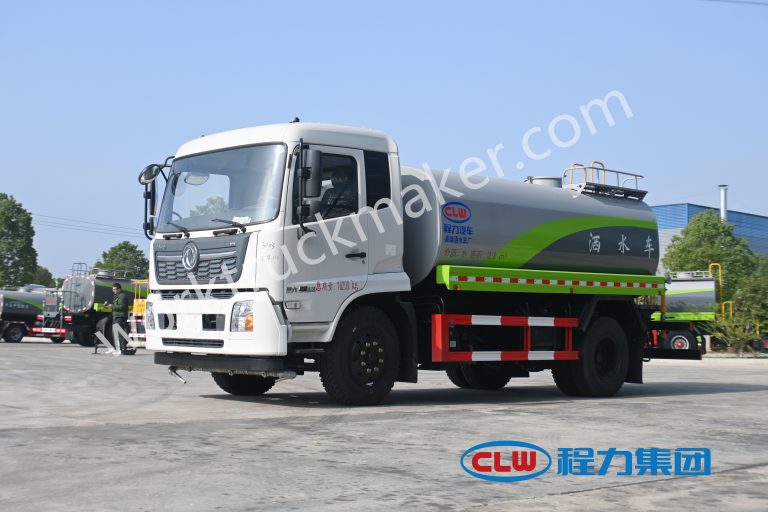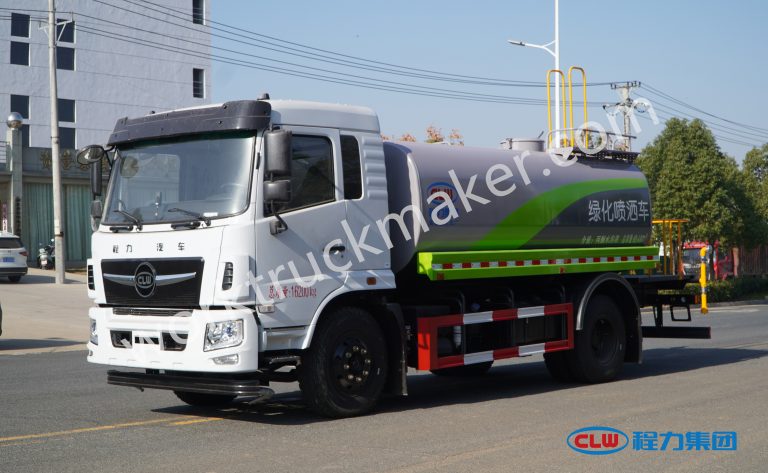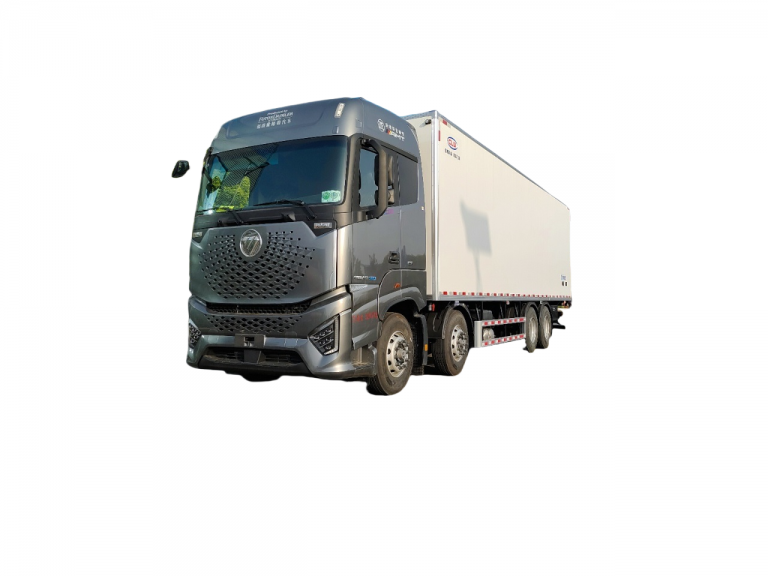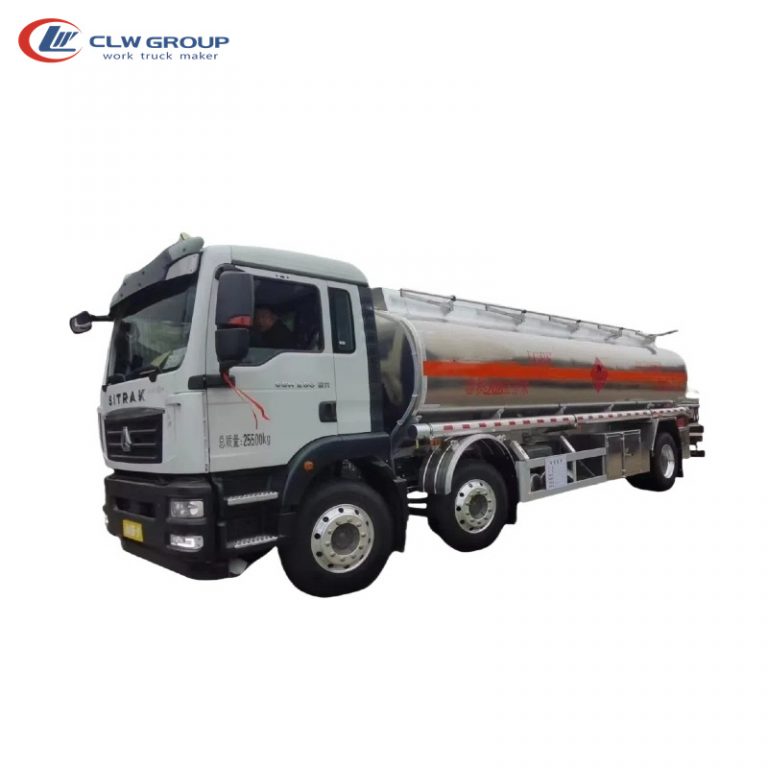Table of Contents
Toggle
Choosing the right fuel truck is crucial for businesses that rely on efficient fuel transportation and delivery. These specialized vehicles, including fuel tankers and fuel tanker trucks, play a vital role in ensuring a steady supply of fuel to various industries and consumers. The selection process involves careful consideration of numerous factors to guarantee optimal performance, safety, and cost-effectiveness.
When it comes to picking the ideal fuel truck, businesses need to analyze their specific requirements, including the type of fuel they handle, delivery routes, and volume demands. Factors such as truck capacity, safety features, fuel efficiency, and compliance with regulations all have an impact on the decision-making process. Additionally, cost considerations, including initial investment and long-term operational expenses, are essential to evaluate. This article will explore these key aspects to help businesses make an informed choice when selecting a fuel truck or fuel truck tank that best suits their needs.
Understanding Fuel Truck Types
Fuel trucks play a crucial role in the transport industry, efficiently moving various liquids and gasses, including fuel, chemicals, and water. These specialized vehicles are equipped with large tanks to store fuel and a pump and hose system to dispense it. Some fuel trucks also have additional storage tanks for other types of liquids, such as propane or lubricants. To meet different business needs, fuel trucks come in various types and sizes, each designed for specific purposes.
Transport Trucks
Transport trucks, also known as full transport (FTL) trucks, are large-volume tanker trucks engineered to transport massive amounts of fuel, oil, and chemicals. These vehicles can hold up to 7,500 gallons of diesel and 8,500 gallons of gasoline in most states. The capacity difference is due to the weight disparity between diesel and gasoline, as these trucks are limited by highway weight restrictions.
Transport trucks are often classified as MC-306 (DOT-406) tankers. These vehicles have elliptical tanks and are primarily used to transport gasoline or other flammable liquids. They typically feature insulated compartment tanks with 3, 4, or 5 compartment configurations. Each compartment has a dome or hatch with a cover. While primarily designed for flammable or combustible liquids, these trucks may occasionally carry non-flammable liquids like milk or molasses.
Bobtail Trucks
Bobtail trucks, also referred to as tankwagon or LTL (Less Than Load) trucks, come in various shapes and sizes. These vehicles are smaller than transport trucks and are designed for more localized fuel delivery. Some bobtail trucks are dedicated solely to fuel transport and can carry up to 4,500 gallons of product. Others may have a smaller fuel capacity of around 1,000 gallons but offer additional space for lubricants, DEF (Diesel Exhaust Fluid), and other products.
It’s important to note that the term “bobtail” can also refer to a semi-truck without a trailer attached. In this context, bobtailing describes the act of driving a semi-truck without its trailer, which typically occurs between cargo pickup and drop-off points.
Box Trucks
While not primarily used for fuel transport, box trucks play a role in some fuel delivery operations. These vehicles, also known as “straight trucks,” have a cargo compartment that is often custom-ordered or added separately to match specific customer requirements. Box trucks used in fuel-related operations may be employed for delivering packaged products or in some mobile fueling applications.
Box trucks can be equipped with various features to suit different needs. Some may have cooling units and insulation to maintain temperature-controlled environments for certain products. They typically have rear doors that span the full cross-section of the compartment for easy access at loading docks, and many also feature a side door for convenient deliveries. Some box trucks are fitted with powered lifts on the back to facilitate the delivery of stacked goods or skids.
Understanding these different fuel truck types helps businesses select the most appropriate vehicle for their specific fuel transportation and delivery needs. Each type offers unique advantages in terms of capacity, versatility, and application, allowing companies to optimize their fuel delivery operations effectively.
Assessing Your Business Needs
To choose the right fuel truck for a business, it is crucial to assess specific requirements and operational needs. This evaluation process involves considering various factors that impact the efficiency and effectiveness of fuel transportation and delivery.
Delivery Volume
The volume of fuel a business needs to transport plays a significant role in selecting the appropriate fuel truck. Companies must measure the length, width, and height of their typical cargo and convert it to cubic units. This calculation helps determine the necessary shipping volume and ensures that the chosen truck has adequate capacity. It’s important to account for any packaging or pallets and assign a load factor to address empty spaces or packing inefficiencies.
Precise volume calculations enable businesses to:
- Determine the correct amount of space required for shipments
- Allow carriers to allocate resources effectively
- Plan loads and optimize truck space utilization
- Estimate operational expenses accurately
Delivery Frequency
The frequency of fuel deliveries has an impact on the choice of fuel truck. Businesses need to consider:
- The number of deliveries required per day or week
- The distance between delivery locations
- The time constraints for each delivery
By analyzing these factors, companies can determine whether they need a larger capacity truck for fewer trips or a smaller, more maneuverable vehicle for frequent, shorter deliveries.
Types of Fuel Transported
Different types of fuel have varying characteristics and transportation requirements. Businesses must evaluate:
- The specific types of fuel they handle (e.g., gasoline, diesel, alternative fuels)
- Any special handling or safety requirements for each fuel type
- The compatibility of the fuel with different truck materials and components
This assessment helps in selecting a fuel truck with appropriate tank materials, safety features, and dispensing equipment.
When assessing business needs, it’s also important to consider factors such as:
- Terrain and road conditions: Will the truck operate in urban areas, highways, or off-road environments?
- Climate considerations: Does the business operate in extreme weather conditions that may affect fuel transportation?
- Regulatory compliance: Are there specific regulations or requirements for transporting certain types of fuel?
By thoroughly evaluating these aspects, businesses can make informed decisions when selecting a fuel truck that aligns with their operational needs and helps optimize their fuel transportation and delivery processes.
Considering Truck Capacity
When selecting the right fuel truck for a business, considering the vehicle’s capacity is crucial. This involves evaluating gallon capacity, weight limits, and compartmentalization options to ensure optimal performance and compliance with regulations.
Gallon Capacity
Fuel trucks come in various sizes to accommodate different transportation needs. The capacity of these vehicles ranges significantly:
- Small-volume tanker trucks: These vehicles typically have a capacity of 1,000 to 3,000 gallons. They are ideal for precision deliveries of smaller quantities of liquids such as diesel fuel, gasoline, and water.
- Large-volume tanker trucks: Engineered to transport massive amounts of fuel, oil, and chemicals, these trucks can carry between 5,000 and 11,600 gallons. They are equipped with multiple compartments to handle various materials safely.
- Standard chemical trailers: These typically hold between 6,000 and 7,000 gallons, with some capable of transporting up to 8,000 gallons for lighter products.
It’s important to note that the maximum capacity of a tanker truck depends on the density of the liquid being transported. Larger tankers average 5,500 to 11,600 US gallons for lighter weight products, while smaller tankers average 3,000 to 5,400 gallons for heavier products.
Weight Limits
Weight limits play a significant role in determining the appropriate fuel truck capacity for a business. These limits are governed by federal and state regulations:
- Federal weight limits: Federal law prevents states from enforcing vehicle weight limits on Interstate highways that deviate from established Federal weight limits, with some exceptions.
- State weight limits: Many states have their own weight limit regulations for non-Interstate highways. For example:
- Some states allow up to 36,000 lbs. on tandem axles on non-Interstate highways, depending on axle spacing.
- Tridem axles may be permitted up to 42,000 lbs. on non-Interstate highways in some states.
- Gross weight limits can vary, with some states allowing up to 84,000 lbs. on a six-axle truck-semitrailer combination.
- Exemptions: Some states provide exemptions for certain types of vehicles or commodities. For instance, vehicles transporting agricultural products or those owned by government entities may be exempt from standard weight limits.
Compartmentalization
Fuel trucks often feature compartmentalized tanks for several reasons:
- Safety: Compartmentalization prevents the mixing of different types of fuels, minimizing the risk of contamination or chemical reactions. This is crucial for ensuring the safety of the transportation process and reducing the likelihood of accidents or spills.
- Efficiency: Compartmentalized tanks allow for the simultaneous transport of different types of fuels in the same vehicle. This increases efficiency by reducing the number of trips required to transport multiple fuel types.
- Flexibility: With compartmentalized tanks, businesses can transport different quantities of various fuels, meeting the specific needs of different customers or locations without requiring separate vehicles for each type of fuel.
- Stability: Compartments and baffles inside the tanks help keep the liquid from flowing forward and backward during braking processes. This prevents drastic load shifts, which may lead to high-profile rollover issues.
- Regulatory compliance: Many regulatory bodies and industry standards require the compartmentalization of tanks in bulk road vehicles for fuel transportation. Compliance with these regulations helps companies avoid fines and penalties while safeguarding the environment.
By carefully considering these aspects of truck capacity, businesses can select a fuel truck that not only meets their operational needs but also ensures safety, efficiency, and compliance with relevant regulations.
Evaluating Safety Features
When selecting a fuel truck for a business, evaluating safety features is paramount to ensure the protection of drivers, cargo, and the environment. Fuel trucks are designed with specialized components to address the unique challenges of transporting hazardous materials. These safety features play a crucial role in preventing accidents, minimizing risks, and complying with regulations.
Baffles
Baffles are essential safety components installed inside fuel truck tanks. These vertical large-holed plates or cages serve a critical purpose in maintaining vehicle stability and control. They prevent excessive forward and rearward motion of the liquid cargo within the tank, which is particularly important when transporting high-viscosity materials.
When a fuel truck comes to a sudden halt, the liquid cargo generates significant force due to its forward momentum. Baffles distribute this force evenly throughout the tank, limiting the transfer of energy and reducing the risk of accidents. By dividing and slowing the flow of moving liquid, baffles help to:
- Prevent weight shifts that could lead to rollovers or jackknifing
- Improve overall vehicle handling and stability
- Reduce the strain on the tank structure during acceleration and braking
Vapor Recovery Systems
Vapor recovery systems are crucial safety features installed on fuel tankers and loading platforms. These systems are designed to capture and contain vapors that may escape during the loading or unloading of volatile products. The primary functions of vapor recovery systems include:
- Preventing the release of harmful vapors into the atmosphere
- Reducing the risk of fire or explosion due to flammable vapors
- Minimizing product loss and increasing operational efficiency
Effective vapor recovery systems not only enhance safety but also contribute to cost savings by reducing lost product. In a closed off-loading system, the recovered vapor is returned to the truck, concentrating it to a level too rich to burn, further enhancing safety.
Emergency Shutoff Mechanisms
Emergency shutoff mechanisms are critical safety features that allow for quick and efficient response in case of accidents or equipment failures. These systems typically include:
- A fuel transport safety emergency shutoff system located on the driver’s side front of the vehicle
- Internal valves, also known as foot valves or emergency valves, which serve dual purposes:
- Facilitating product transfer into the tanker
- Acting as engineered “weak or break” points designed to shear and close off access to the tanker in case of a rollover or collision
These emergency shutoff mechanisms help to minimize or prevent spillage in the event of an accident, reducing environmental impact and safety risks.
In addition to these specific safety features, fuel trucks should also be equipped with standard safety equipment such as fire extinguishers, reflective warning devices, and personal protective equipment for drivers. Regular inspections, comprehensive driver training, and adherence to proper loading and unloading procedures further enhance the overall safety of fuel truck operations.
Analyzing Fuel Efficiency
Fuel efficiency plays a crucial role in the selection of the right fuel truck for a business. It has an impact on operational costs, environmental impact, and overall performance. To analyze fuel efficiency effectively, businesses need to consider several key factors.
Engine Type
The type of engine in a fuel truck has a significant influence on its fuel efficiency. Traditional diesel engines have been the standard in the trucking industry for many years. However, the emergence of electric vehicles (EVs) has revolutionized the transportation sector, including trucks. As the shift towards electric trucking gains momentum, it is essential to understand the differences in fuel efficiency between EV trucks and their traditional counterparts.
Electric trucks offer several advantages in terms of fuel efficiency:
- Higher energy conversion efficiency
- Reduced energy consumption during idling
- Potential for regenerative braking, which recovers energy during deceleration
However, it’s important to note that the overall efficiency of electric trucks depends on factors such as the source of electricity and charging infrastructure.
Aerodynamics
Aerodynamics contributes significantly to a fuel truck’s overall fuel economy, accounting for up to 50% in on-highway applications. Optimizing the aerodynamic design of a fuel truck can lead to substantial improvements in fuel efficiency. Key considerations include:
- Keeping airflow “attached” to the vehicle to minimize turbulence
- Incorporating chassis skirts to improve air movement along the sides of the tractor
- Using side extenders to direct airflow past the tractor and trailer gap
- Installing extended roof fairings or air deflectors for improved efficiency with full-height trailers
- Minimizing the trailer gap, generally keeping it to 36 inches or less
- Utilizing wheel covers on both the vehicle and trailer wheels
These aerodynamic enhancements can result in smoother airflow around the vehicle, reducing drag and improving fuel economy.
Fuel Consumption Rates
Understanding fuel consumption rates is essential for analyzing a fuel truck’s efficiency. Several factors influence these rates:
- Vehicle weight: Both curb weight (empty weight) and gross weight (total weight with cargo) affect fuel consumption. Heavier vehicles require more energy to move, leading to increased fuel usage.
- Driving behavior: Practices such as maintaining consistent speeds, reducing idling times, and effectively using cruise control can lead to notable improvements in fuel efficiency.
- Vehicle maintenance: Regular maintenance activities, such as ensuring proper tire pressure and engine tune-ups, can prevent increased fuel consumption.
- Operational conditions: Factors such as aggressive driving, cold weather, cargo weight, and terrain can significantly impact fuel consumption rates.
To accurately assess fuel efficiency, businesses should consider using metrics such as gasoline gallon equivalents (GGEs) to compare different vehicle types and fuel sources. This allows for a standardized comparison of fuel consumption across various truck models and configurations.
By carefully analyzing these aspects of fuel efficiency, businesses can make informed decisions when selecting a fuel truck that aligns with their operational needs and sustainability goals. Optimizing fuel efficiency not only reduces operational costs but also contributes to environmental sustainability by lowering emissions and reducing the overall carbon footprint of fuel transportation operations.
Examining Compliance Requirements
Compliance with regulatory requirements is a critical aspect of operating a fuel truck business. These regulations are designed to ensure safety, environmental protection, and operational efficiency. Companies must navigate a complex web of federal, state, and local rules to maintain their legal standing and reputation in the industry.
DOT Regulations
The Federal Motor Carrier Safety Administration (FMCSA), a division of the Department of Transportation (DOT), sets the standards for safety and operation in the trucking industry. Key areas of regulation include:
- Hours of Service (HOS): These rules dictate driving limits for drivers to prevent fatigued driving. For example, drivers can drive for 11 hours after ten consecutive hours off duty.
- Electronic Logging Devices (ELD): The ELD mandate requires drivers to electronically track their driving hours, eliminating the need for manual record-keeping and improving data accuracy.
- Drug and Alcohol Testing: The FMCSA enforces stringent protocols for drug and alcohol testing of drivers.
- Vehicle Safety: Regulations cover various aspects of truck and equipment safety, including periodic inspections to ensure vehicles are roadworthy.
Compliance with these regulations is mandatory and essential for safety and operational legality. Proper documentation of all maintenance activities and inspections is crucial to verify compliance.
EPA Standards
The Environmental Protection Agency (EPA) sets standards to reduce the environmental impact of diesel engines and fuel transportation. Key aspects include:
- Emissions Standards: The Clean Air Act (CAA) requires every engine and motor vehicle to meet specific emission standards. Manufacturers must obtain a Certificate of Conformity from the EPA before introducing vehicles into commerce.
- Fuel Quality Testing: The EPA manages a comprehensive fuel compliance program that includes fuel registration, inspections, and a fuel quality testing and reporting system.
- SmartWay Program: This EPA initiative incentivizes fleets to adopt sustainable practices, including fuel-efficient technologies and idle reduction strategies.
- Fuel Registration: Refiners and importers must register any motor vehicle fuel and fuel additive with the EPA before marketing it, providing chemical descriptions and health-related information.
Compliance with these standards is crucial for reducing greenhouse gas emissions and promoting cleaner air. Violations can result in significant penalties, with the CAA setting a maximum civil penalty of $37,500 per day per occurrence.
State-specific Rules
In addition to federal regulations, fuel truck operators must be aware of state and local laws that can vary significantly by region. These may include:
- Weight Limits: Specific weight restrictions on roads that may differ from federal standards.
- Hazardous Materials Transportation: Additional requirements for transporting hazardous materials.
- Environmental Standards: Some states have more stringent environmental regulations. For example:
- California’s Air Resources Board (CARB) enforces rules requiring truckers to upgrade older vehicles to reduce emissions.
- New York and Oregon have adopted similar stringent standards aimed at reducing greenhouse gasses and promoting zero-emission vehicles.
It’s crucial for fleet operators to understand that these regulations apply to their operations when operating within these states, regardless of where they are based. Compliance with state-specific environmental standards is mandatory when traveling through or operating in these states.
By adhering to these multi-layered compliance requirements, fuel truck operators can ensure they maintain a safe, efficient, and legally compliant operation while minimizing their environmental impact.
Comparing Cost Factors
When selecting the right fuel truck for a business, it is crucial to consider various cost factors that have an impact on the overall expenses and profitability of the operation. These factors can be categorized into initial investment, maintenance costs, and operational expenses.
Initial Investment
The initial investment in a fuel truck represents a significant portion of the total cost of ownership (TCO). This includes the purchase price or lease payments for the vehicle. According to recent data, truck and trailer lease payments have risen by 18.6% in the past year, reaching 33.1 cents per mile. For businesses considering purchasing a truck, it’s important to note that while buying provides complete ownership and freedom of use, it also involves higher upfront costs. Leasing, on the other hand, often involves lower initial expenses and monthly payments, making it a more affordable option for some businesses.
When evaluating the initial investment, businesses should also consider financing options. It’s advisable to look for lenders specializing in commercial vehicle loans that offer competitive rates and flexible terms. Additionally, the choice between diesel, electric, or hybrid trucks can affect the initial cost. While electric vehicles typically have higher upfront costs, they may offer lower maintenance expenses and better fuel efficiency in the long run.
Maintenance Costs
Maintenance costs play a significant role in the overall expenses of operating a fuel truck. These costs typically include both fixed and variable fees, depending on factors such as vehicle age, usage, and parts availability. Recent data indicates that repair and maintenance costs account for 19.6 cents per mile, representing between 8% and 10% of a fleet’s average marginal cost.
To manage maintenance costs effectively, businesses should consider the following strategies:
- Implement regular preventive maintenance to avoid costly repairs and downtime
- Use fleet management software to track expenses and monitor performance
- Negotiate discounts and warranties with vendors and service providers
- Train drivers on safe and efficient driving habits
It’s worth noting that while electric vehicles may have higher initial costs, they generally have lower maintenance expenses due to fewer moving parts that can break down with repeated use.
Operational Expenses
Operational expenses encompass various costs associated with the day-to-day running of a fuel truck. The most significant of these is fuel cost, which has seen a substantial increase in recent years. For-hire carriers’ average fuel costs jumped by 53.7% last year, reaching 64.1 cents per mile. This makes fuel the largest ongoing expense for any fleet, estimated to account for 24% of total operational costs.
Other operational expenses to consider include:
- Driver wages and benefits, which have increased by 15.5% and now amount to 72.4 cents per mile
- Insurance premiums
- Tire costs
- Tolls and permits
To optimize operational expenses, businesses can focus on improving fuel efficiency through various means:
- Implementing aerodynamic enhancements such as roof fairings and trailer side skirts
- Reducing vehicle weight where possible
- Planning trips accurately to cut out unnecessary miles
- Utilizing up-to-date GPS systems for efficient routing
By carefully analyzing and managing these cost factors, businesses can make informed decisions when selecting a fuel truck that aligns with their operational needs and financial goals. It’s essential to consider the total cost of ownership and average marginal cost when evaluating different options to ensure long-term profitability and efficiency in fuel truck operations.
Conclusion
Selecting the right fuel truck for a business involves careful consideration of various factors. From assessing delivery needs and truck capacity to evaluating safety features and compliance requirements, each aspect has an impact on the overall efficiency and effectiveness of fuel transportation operations. Cost factors, including initial investment, maintenance, and operational expenses, also play a crucial role in the decision-making process. By thoroughly examining these elements, companies can make informed choices that align with their specific requirements and financial goals.
In the end, the ideal fuel truck is one that strikes a balance between performance, safety, and cost-effectiveness. It should meet regulatory standards, offer optimal fuel efficiency, and provide the necessary capacity for the business’s unique needs. By taking a comprehensive approach to analyzing these factors, companies can enhance their fuel transportation capabilities, boost operational efficiency, and ultimately improve their bottom line. This strategic selection process sets the foundation for successful and sustainable fuel delivery operations in an ever-evolving industry landscape.

